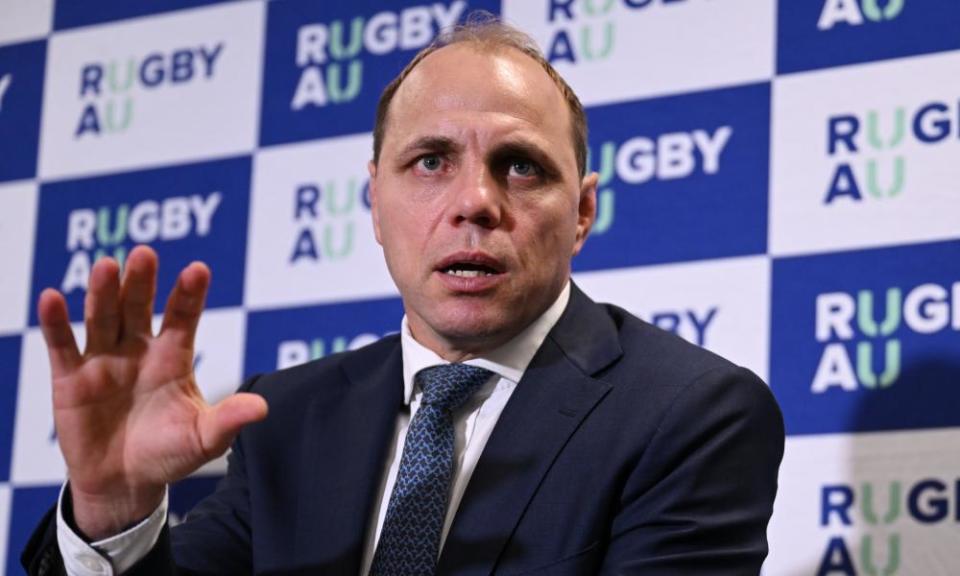Rugby Australia trials new tackle height laws to combat concussion

Rugby Australia has confirmed that it will implement a new trial that will see the legal height of tackles in the game lowered to below the sternum from February.
The trial is designed to reduce the risk of head-to-head and head-to-shoulder contact between ball carriers and tacklers. World Rugby research has shown the risk of concussion is more than four times higher when the tackler’s head is above the ball carrier’s sternum.
Related: Concussed: Sport’s Uncomfortable Truth by Sam Peters review – rugby’s shame
The new 9.13 law will see match officials place greater emphasis on preventing a ball carrier “dipping” into a tackle and placing themselves, and potentially the defender, in an unsafe position for contact. However, it will not change the ability for an attacking player to “pick-and-go” when starting and continuing at a low body height.
The two-year trial comes after Rugby Australia announced its support for World Rugby’s global research initiative last March, and will apply to all levels of Rugby below Super Rugby level when introduced in February. It follows more than six years of research that has already seen trials of lower tackle heights undertaken in nations including France, England, New Zealand, South Africa, Ireland, Wales and Scotland.
Preliminary data in South Africa has shown a 30 per cent reduction in concussions, while France recorded a 64 per cent reduction in head-on-head contact – as well as a 14 per cent increase in participation on pre-COVID levels.
This change in law will apply to all Australian rugby union competitions below Super Rugby that commence on or after 10 February, 2024, through till the end of 2025, and includes school and pathway competitions to protect the code’s young players.
Since their abysmal 2023 World Cup, in which the Wallabies failed to make the finals for the first time in 36 years, Australian Rugby has reeled from crisis to crisis, with coach Eddie Jones quitting in October and CEO Hamish McLennan rolled from the leadership in a boardroom coup last month.
Now the code is rebuilding its image in a bid to save its future. “Research from around the world has clearly identified safety as the number one issue preventing fans and potential players from taking up the game,” said Rugby Australia CEO Phil Waugh.
“It is impossible to remove all risk from the game, however we firmly believe that promoting safer tackle techniques, and reducing the risk of head contact and concussion will lead to an even safer game. I am confident our players and coaches at all levels of the game will continue to work on safe and effective tackle technique.”
Waugh acknowledged there would be “an adjustment period” implementing the law, with rugby already criticised for over-zealous refereeing and pedantic rules.
“I would ask for patience and respect between all parties as we embark on this journey,” he said. “In the French trial, they saw a significant increase in penalties in the first year of the trial, followed by a substantial drop in those numbers over the next two years as players and officials adjusted to the new measures.
“We will continue to ensure that any decisions that have the potential to impact the game are driven by research and evidence that prioritise player safety.”
Rugby Australia’s General Manager, Community Rugby, Michael Procajlo said the World Rugby research showed three different risk zones for tackling.
“The green zone encompasses the ball carrier’s torso from the sternum to the hips – this is the safest zone to tackle. Statistically, there is a little more risk once the tackle drops below the hips – hence it becomes amber.
“However, the greatest risk is present when tackles go above the sternum line and there is a higher risk of head-on-head or head-on-shoulder contact.”

